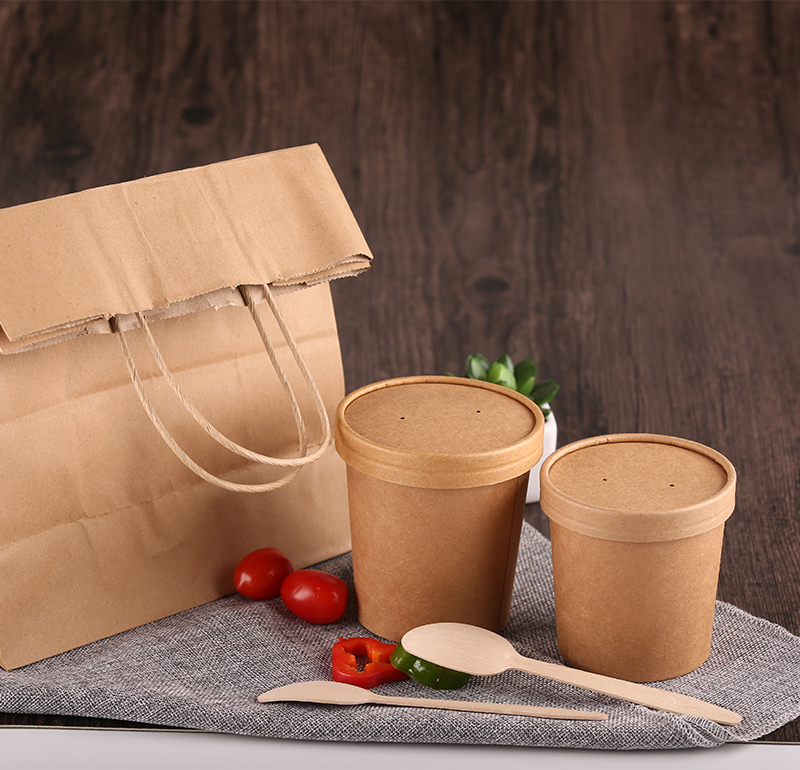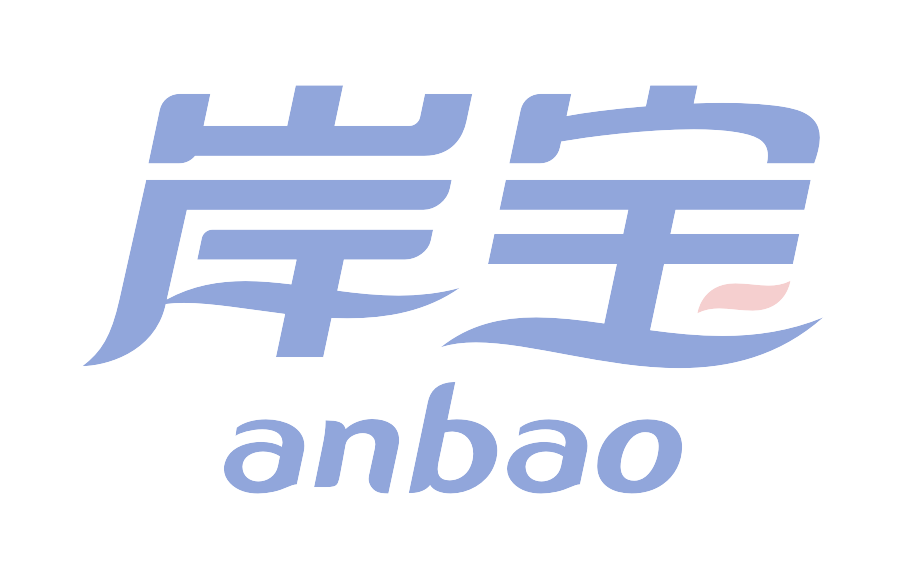
In the trend of pursuing environmental protection, health, and natural lifestyle, kraft paper bowls are increasingly becoming the preferred container for food delivery, convenient light meals, event meals, and household use due to their unique original ecological appearance, biodegradable characteristics, and reliable food holding performance. It not only meets the convenience needs of modern life, but also echoes society’s expectations for reducing environmental burden.
Core Definition and Characteristics of Kraft Paper Bowl
Kraft paper bowl refers to a disposable food container made mainly of primary color or light brown food grade kraft paper pulp, manufactured through molding process, and usually coated with a food grade barrier layer (such as PE or PLA film) on the inner surface. Its name “Kraft” comes from German and means “sturdy”, reflecting its material properties. The main features include:
Natural and environmentally friendly appearance: unbleached natural wood color or light brown, presenting natural fiber texture, visually conveying images of simplicity, health, and environmental protection.
Sustainable material foundation: The main raw materials are wood fiber (usually from sustainably managed forests, such as FSC/PEFC certified sources) or renewable resources such as bamboo fiber.
Necessary functional barrier: The food grade coating (PE or PLA) on the inner wall provides a critical barrier to prevent oil and water from penetrating, ensuring no leakage or deformation when containing wet or oily food.
Stable structure: The optimized bowl wall design and stiffness can withstand the weight and temperature of various types of food, making it easy to hold and consume.
Core material composition and process
Substrate – Food grade kraft pulp:
Made from unbleached or lightly bleached kraft pulp or bamboo pulp, it retains the natural color of lignin and has better strength than ordinary white cardboard.
Must comply with strict food contact material safety standards (such as Chinese GB 4806.8, EU 10/2011, US FDA 21 CFR) to ensure that there is no risk of harmful substance migration.
Barrier layer – inner coating:
Polyethylene (PE): The most commonly used and technologically mature barrier material, providing excellent oil, water, and leakage resistance at a low cost. Suitable for most hot and cold foods.
Polylactic acid (PLA): a biobased material derived from renewable resources such as corn starch. Biodegradable under specific industrial composting conditions. Its heat resistance and oil resistance are usually slightly inferior to PE, and its cost is higher, making it suitable for applications such as medium and low temperature food or those pursuing complete compostability.
Production process:
Pulp molding: Pulp is adsorbed and molded in a mold to form a bowl shaped structure, which is then dried and hot pressed for shaping.
Film coating: After molding or during the molding process, the melted PE or PLA is uniformly coated on the inner surface of the bowl and cooled to solidify.
Edge treatment: The bowl mouth is usually rolled or polished to enhance strength and comfort during use.
Key advantages and value
Outstanding environmental friendliness:
Renewable raw materials: The main components are derived from renewable plant fibers.
Recyclability (under specific conditions): In areas with professional classification and recycling facilities, kraft paper bowls with PE coating can theoretically be recycled together with waste paper (actual recycling rate is affected by facilities and consumer habits). PLA coated bowls need to enter industrial composting facilities.
Biodegradable/compostable (PLA coated version): PLA coated kraft paper bowls can ultimately decompose into carbon dioxide, water, and biomass in an industrial composting environment that meets standards.
Plastic reduction image: Compared to pure plastic bowls, its natural fiber substrate has a higher proportion, reducing dependence on fossil based plastics.
Good usability:
Leak proof and oil proof: The inner coating effectively blocks the penetration of liquids and oils.
Thermal insulation and stability: The paper structure itself has a certain degree of thermal insulation, which slows down heat transfer and is convenient to hold.
Stable structure: able to withstand the weight of various foods such as soups, salads, rice, noodles, etc.
Microwave Applicability (Partial): PE coated bowls that are clearly labeled as “microwaveable” and comply with relevant standards can be used for short-term heating in microwave ovens (with the lid removed). PLA coated bowls are usually not suitable for microwave ovens.
Safety and hygiene:
Food grade materials and processes ensure the safety of packaged food.
Disposable to avoid cross contamination.
Natural beauty and brand tone:
The original color appearance conveys the brand concept of natural, healthy, organic, and environmentally friendly.
Main application scenarios
Kraft paper bowls are suitable for holding a variety of hot and cold foods that do not require complex sealing:
Food takeout: Noodles in soup, Wonton, dumplings, Congee, rice set meal, salad, light food.
Fast food and convenience stores: Kanto style cooking, ready to eat soup, curry rice, bento and side dishes.
Tea and light food shop: fruit scoop, yogurt cup, ice cream, snack platter.
Large events and conferences: group meal distribution, tea break Dim sum dressing.
Airline and high-speed rail catering: containers for main dishes or side dishes.
Supermarket and fresh food delivery: packaging for pre made dishes, cold dishes, and cooked food.
Family gatherings and picnics: convenient and hygienic way to pack food.
Considerations for choosing kraft paper bowls
Food characteristics:
Temperature: When serving hot food (such as scalding soup), it is necessary to choose a style with high-temperature resistant coating (usually PE has better heat resistance than PLA) and thicker bowl walls. Cold dishes (salads, ice cream) have relatively low requirements.
Oily/Watery: Oily foods (such as curry and oily soups) require higher oil barrier layers.
Solid/liquid content: Foods with a lot of soup should ensure sufficient structural strength and sealing of the bowl.
Capacity and size:
Choose the appropriate capacity (such as 12oz/350ml, 16oz/450ml, 24oz/700ml, 32oz/950ml) and bowl shape (depth, diameter) based on the amount of food served.
Functional requirements:
Do you need a lid? Takeout transportation usually requires a lid of the corresponding size and material (PP/PLA).
Composting requirements: If there is an industrial composting treatment channel in the backend and you want the product to be completely compostable, you need to choose a bowl with PLA film coating and overall compostable certification (such as BPI, OK Compost Industrial).
Safety and Compliance:
Food grade certification: Official testing reports that comply with local regulations (GB 4806, FDA, EU 10/2011, etc.) must be provided.
Clear material identification: Clearly indicate the substrate and coating material.
Sustainability:
Raw material certification: Pay attention to whether the paper comes from sustainably managed forests (FSC/PEFC certification).
Coating selection: Balancing the maturity performance of PE with the compostability of PLA.
Recycling label: Clearly inform consumers of the correct local waste disposal methods (such as recyclable and requiring industrial composting).
Cost effectiveness: Choose based on meeting performance, safety, and environmental requirements.
Printing customization: If you need brand printing, choose environmentally friendly ink and printing technology suitable for kraft paper material (mainly flexographic printing).
conclusion
Kraft paper bowls are a modern food packaging paradigm that balances functionality, safety, and environmental sustainability. Its natural and simple appearance and composition based on renewable resources are in line with the current consumers’ pursuit of environmental protection and healthy living. A well-designed, material safe, and reliable kraft paper bowl is not only a container for holding food, but also an important carrier for conveying brand value and environmental protection concepts.
Note: As a supplier specializing in food packaging solutions, Anbao’s product line typically includes various types of kraft paper bowls that comply with domestic and international safety and environmental standards.


